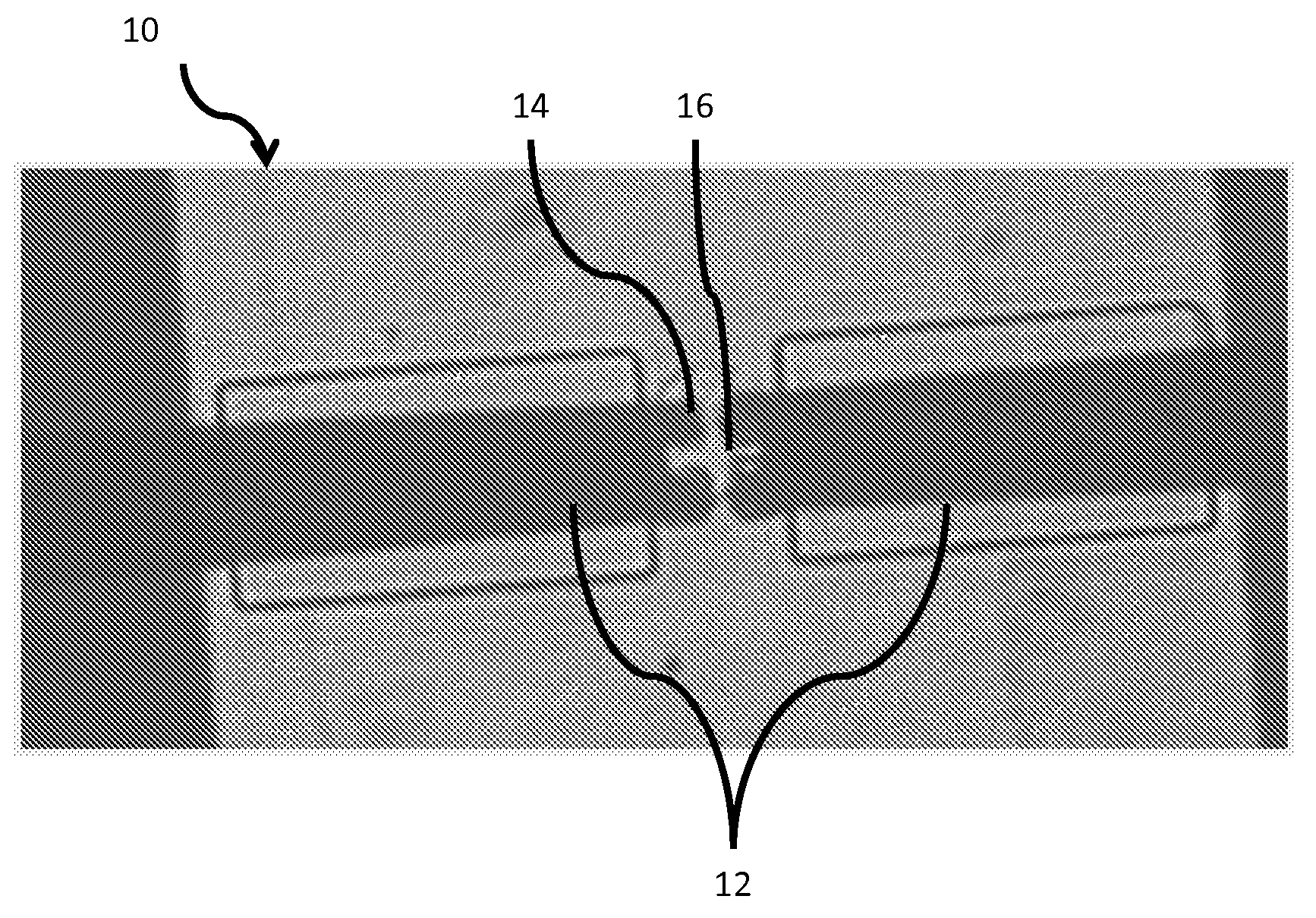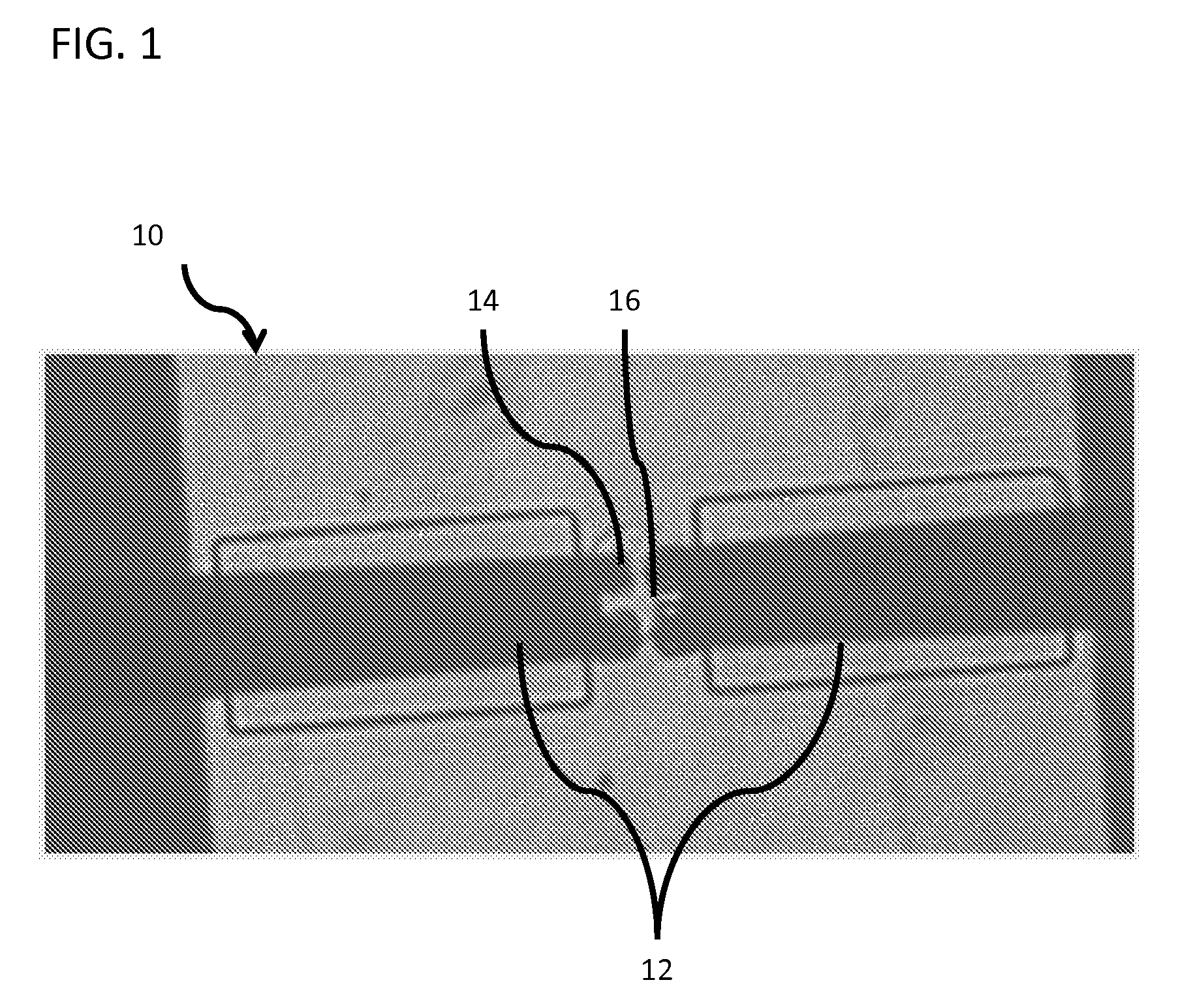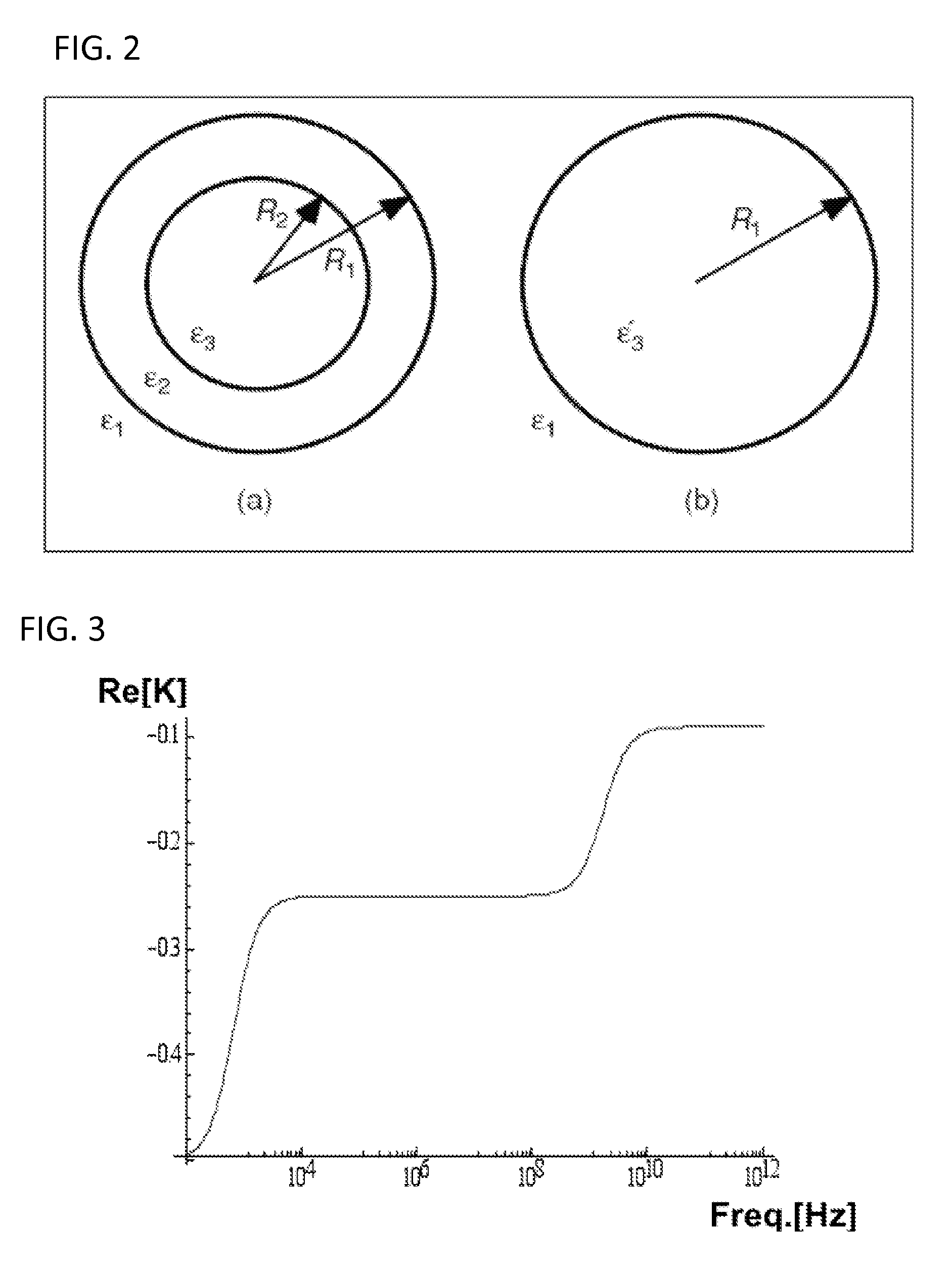Device and method for single cell and bead capture and manipulation by dielectrophoresis
a single cell and bead technology, applied in the field of single cell and bead capture and dielectrophoresis, can solve the problems of limiting the quantitative data that can be obtained, and negative dielectrophoresis for all frequencies
- Summary
- Abstract
- Description
- Claims
- Application Information
AI Technical Summary
Benefits of technology
Problems solved by technology
Method used
Image
Examples
example 1
Single Cell / Bead Capture
[0051]Single cell and single bead capture experiments were performed using a RAW 264.7 mouse leukaemic monocyte macrophage cell line (in cell culture medium) and gold-coated polystyrene beads (microParticles GmbH, Germany, in water). In this exemplary embodiment, these RAW 264.7 cells are shown being captured in cell culture medium (composed of 87% DMEM (Mediatech. Inc. USA) supplemented with 11% Fetal. Bovine Serum, 1% Penicillin / Steptomycin, and 1% non-essential amino acid) in FIG. 9a. In FIGS. 9b and 9c are 5 μm gold-coated polystyrene beads are shown being captured in distilled water.
[0052]The cells are approximately 15 μm in diameter and the beads, 5 μm in diameter. The applied voltage is 5V p-p at 1 MHz for both experiments. Due to their smaller size, the capture of single micro-beads requires greater confinement of the electrical field gradients (and corresponding DEP force). For this reason, 20 μm gaps in the patterned parylene were used for single ce...
example 2
Single Cell / Bead Manipulation
[0053]Although the above discussion has focused on the ability to capture single cells / beads using pDEP, the current invention also has the potential for unique opportunities to manipulate single cells / beads. Previous work has demonstrated bubble-release of microbeads through laser heating. (See, e.g., W. Tan and S. Takeuchi, PNAS, 2007, 104, 1146-1151, the disclosure of which is incorporated herein by reference.) In this example, a much simpler technology for bubble release, namely, the generation of bubbles via electrolysis is presented. For example, FIGS. 10a to 10c provide images showing bead capture and release using the pDEP capture device of the current invention. As shown, once a bead is captured (10a), a decrease of the applied frequency (down to a few Hz) either leads to the reversal of the electrical polarization, which would create a nDEP paradigm and repulse the bead, or, as shown here, bubble generation by electrolysis. As shown, the bubble...
example 3
[0054]It is important that the parameters used for dielectrophoretic capture be tuned such that the cell is not harmed. In this example, a Trypan Blue assay was used to assess cell vitality following pDEP cell capture. As shown in FIG. 11a, cells were not stained 15 minutes after capture. To confirm that the Trypan Blue assay was functioning, cells were allowed to sit in the microfluidic device, with no incubation. Cells were imaged again after 3 hours (FIG. 11b). At this point the cells were dead and stained blue under the Trypan Blue assay.
PUM
| Property | Measurement | Unit |
|---|---|---|
| Height | aaaaa | aaaaa |
| Frequency | aaaaa | aaaaa |
| Frequency | aaaaa | aaaaa |
Abstract
Description
Claims
Application Information
 Login to View More
Login to View More - R&D
- Intellectual Property
- Life Sciences
- Materials
- Tech Scout
- Unparalleled Data Quality
- Higher Quality Content
- 60% Fewer Hallucinations
Browse by: Latest US Patents, China's latest patents, Technical Efficacy Thesaurus, Application Domain, Technology Topic, Popular Technical Reports.
© 2025 PatSnap. All rights reserved.Legal|Privacy policy|Modern Slavery Act Transparency Statement|Sitemap|About US| Contact US: help@patsnap.com



